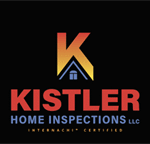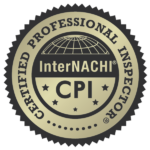

The Full Home Inspection gives you the information you need to make an informed decision.
Houses, Condos, Townhouses, Apartments, Commercial
A full home inspection is a detailed visual inspection of the sixteen major components of the house and their associated components. This inspection includes a detailed written report with photographs and takes three to four hours to complete. The report can then be used as a negotiating tool to lower the price of the house or force repairs to be made prior to purchasing. It can also eliminate surprises by identifying components that may be nearing the end of their life expectancy and may need replacement after moving in.
16 Major Components of the Property & Structure
The Pre-listing inspection is a walk-through inspection where I observe the condition of the components of the house and include a summary level report on the 16 major components found in a Full Home Inspection but not to the depth required by the Full Home Inspection.
Every home inspection will reveal an issue or two. This allows you to make repairs or at least acknowledge the conditions. Being aware of any problems and fixing those that are important may avoid last-minute negotiating over minor issues found in a buyers inspection. It can result in being able to ask a higher price for your property.
This type of inspection takes 2 to 3 hours.
As this is not as in-depth as a Full Home Inspection, it will be priced accordingly.
A commercial property inspection is designed to help you understand the overall condition of the building and its components at the time of inspection. This type of inspection provides the potential buyer, owner, or tenant with an independent non-biased visual assessment of the property. A detailed report with photos is prepared and sent to you via email. This report can be used for generating budgets, scheduling capital improvements, planning and specifically as a tool in negotiating pre-purchase needs as art of your due diligence.
A commercial inspection is performed on all types of buildings and businesses. They are performed on office buildings, restaurants, strip malls, warehouses, mixed-use commercial, retail store, store fronts, medical buildings, professional buildings, and other commercial establishments. My clientele consists of owner occupants, insurance companies, mortgage companies, banks, landlords, tenants, pre-lease or post leaser, investors, property management companies, pre-purchasers and others.
Construction workers sometimes make mistakes and may not even realize it. A home inspector can detect these errors and get them corrected before you take ownership of the property.
When under construction, the inspector can examine the framing, electrical wiring and plumbing that might not be visible once it has been covered with drywall.
A second visit will be made when construction is finished.
Problems that are found before you move into the home can be detected and remedied by the builder.
This type of inspection can also be useful for homeowners that have a new home approaching the end of the builders warranty. The report could assist in further discussions with the builder.
Radon is a colorless, odorless, radioactive gas that occurs in nature as uranium breaks down in the soil and rocks. It can get into homes and accumulate amounts that are known to cause lung cancer.
Radon is the leading cause of cancer among non-smokers and the second leading cuse of lung cancer in the U.S.
The only way to know if radon is present in dangerous amounts is by testing.
I recommend having this test. The counties I serve are in EPA Zone 5. This Zone has the most likelihood of the test showing an elevated reading above the 4pCi/liter level and requiring mitigation. Mitigation involves having a system to lower levels of radon installed by a licensed Mitigation expert.
There are three main tests:
Ecoli/Coliform Test
This test is highly recommended for anyone with well water. This test will test for harmful bacteria in the water supply that would cause you to become sick.
Lead Water Test
This test is highly recommended for houses built prior to 1978. Lead pipes and lead solder were used in construction during this period which can cause lead contamination in your water, even if you have municipal water.
Nitrate/nitrite Test
This test is highly recommended for homes in rural areas that are near farmland and have a well for drinking water. This test will find if there is contamination from fertilizer and pesticides that farmer’s use on their fields.
Other water testing is available as well.
I take a water sample to a Water Testing Lab for analysis and you will receive their report when it is ready. This lab can perform many other kinds of water tests upon request.
I generally do not recommend this test as Septic Dye Testing is a VISUAL inspection and has many limitations. My recommendation is to have an invasive inspection by a septic company. Many times the Septic Dye Test is required by a lender.
Limitations make the test inconclusive. The inspector must rely on the information they are given by the seller, the size of the tank, that it has not been recently pumped or been in use for a long period of time.
A home inspector can only report on what is observed above-ground which does not always give an accurate evaluation of the condition of the system.
The test is performed by flushing a dye solution down a toilet that is connected to the septic system and adding the volume of water which is determined by the size of the septic system. When the system is inundated with water, the absorption field becomes saturated and if there is a serious problem dye will come to the surface. The inspector checks after at least 3 hours and observes if any dye has appeared above the absorption field.
One of the primary goals of a WDO (Wood destroying organism/insect) inspection is to check for damage unseen by the naked eye.
Wood destroying organisms wreak havoc on homes and businesses. The common wood destroying insects I will be inspecting for are subterranean termites, carpenter ants, carpenter bees, and powder post beetles. This is a visual inspection for signs of these insects or signs of damage caused by them.
This is included in the general home inspection, but can also be performed separately as a separate inspection or yearly checkup.